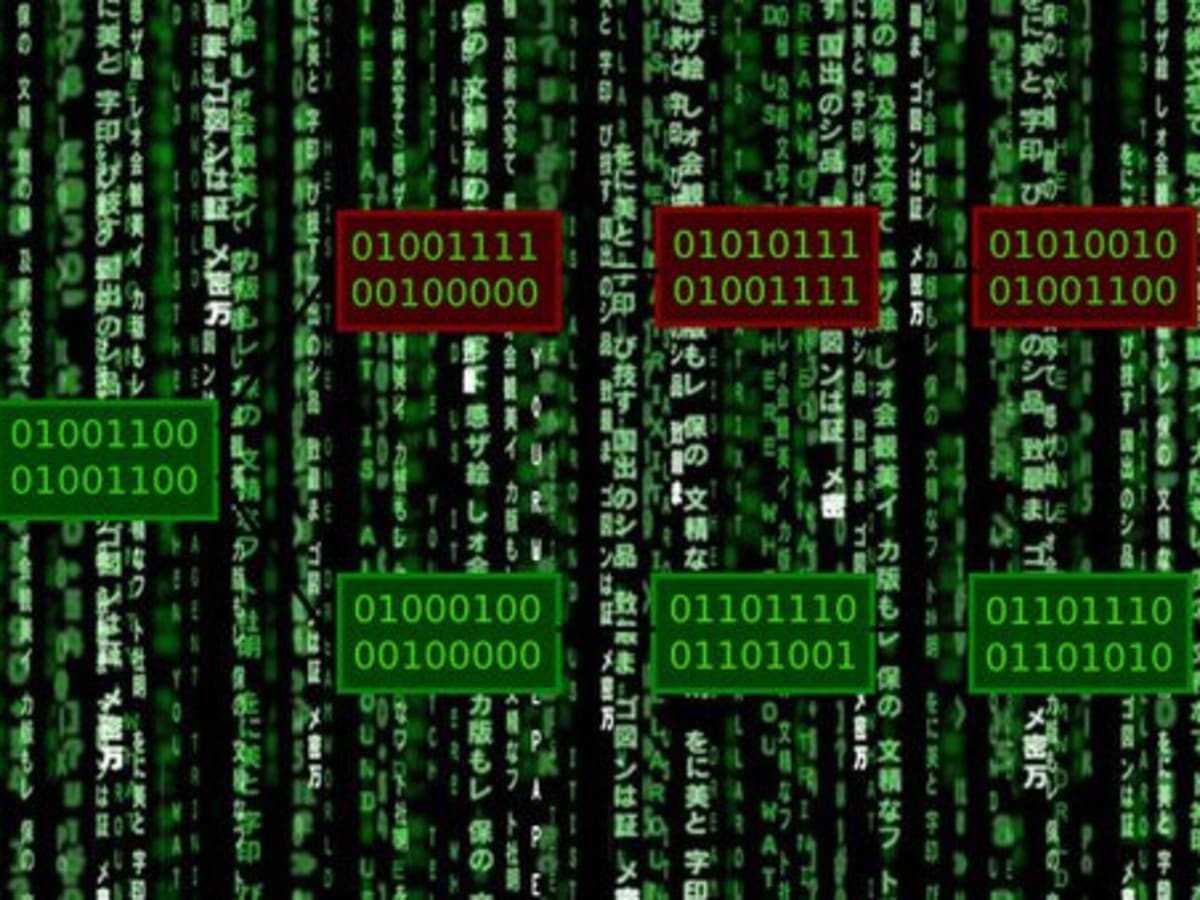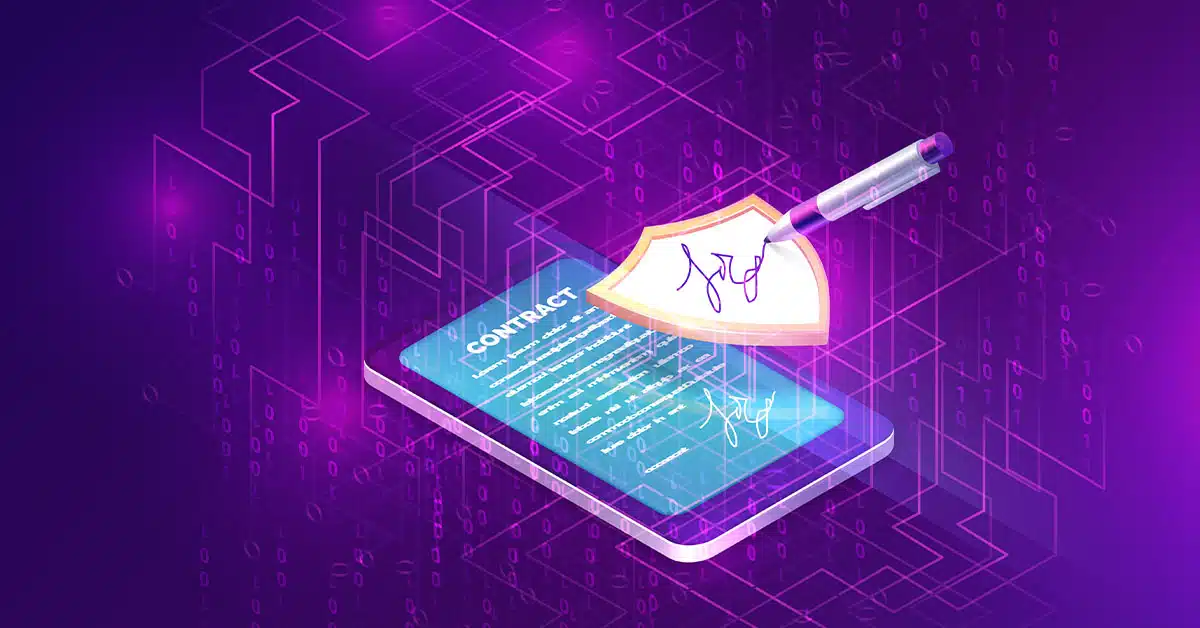Introduction
Smart contracts are revolutionizing the world of technology and business. These self-executing contracts, powered by blockchain technology, have the potential to automate and streamline processes, eliminate intermediaries, and ensure transparent and efficient transactions. As the adoption of smart contracts continues to grow, it becomes crucial for individuals and businesses alike to understand how to read and interpret these contracts.
In this article, we will explore the basics of smart contracts and delve into the tools and platforms that can help you read and analyze them effectively. We will also break down the anatomy of a smart contract, discussing how to interpret the source code, analyze the functions and variables, and identify potential risks and vulnerabilities.
Reading and reviewing smart contracts requires a certain level of technical understanding. However, with the right knowledge and guidance, anyone can become proficient in deciphering the intricacies of these contracts. By understanding how to read smart contracts, you can enhance your ability to evaluate their integrity, security, and reliability.
Whether you are a developer, investor, or simply curious about blockchain technology, this article aims to provide you with the necessary insights to navigate the world of smart contracts with confidence.
So, let’s dive in and unravel the mysteries behind reading and understanding smart contracts.
Understanding the Basics of Smart Contracts
Before we dive into the technicalities of reading and interpreting smart contracts, it’s essential to grasp the fundamental concept behind them.
Smart contracts are self-executing contracts with the terms of the agreement directly written into lines of code. These contracts are built on blockchain technology, which ensures their immutability, transparency, and decentralization. By using smart contracts, parties can automate and enforce the performance of an agreement without relying on intermediaries.
Unlike traditional contracts, smart contracts are executed automatically when predefined conditions are met. This automation eliminates the need for middlemen, reducing costs, and increasing operational efficiency. Additionally, the transparency and tamper-proof nature of the blockchain ensure that all participants can verify the integrity and integrity of the contract.
For example, a smart contract can be used in a real estate transaction. Instead of relying on a real estate agent, lawyers, and banks, the contract can be written into code and executed automatically. The code can be programmed to transfer the ownership of the property to the buyer once the agreed-upon payment is made, eliminating the need for unnecessary paperwork and intermediaries.
To read and understand smart contracts effectively, it is crucial to have a basic understanding of programming concepts and the specific blockchain platform on which the contract is built. Familiarizing yourself with the programming language used to write the smart contract, such as Solidity for Ethereum, can greatly enhance your comprehension.
Furthermore, it’s essential to understand the underlying blockchain technology and its consensus mechanism. Different blockchains may have variations in how they handle smart contracts and execute code. Therefore, gaining knowledge about the specific blockchain platform will enable you to better evaluate the security, performance, and limitations of the contract.
In the next section, we will explore various tools and platforms that can assist you in reading and analyzing smart contracts effectively. By leveraging these resources, you can save time and effort in deciphering the code and understanding the contract’s functionalities.
Tools and Platforms for Reading Smart Contracts
As the popularity of smart contracts continues to rise, numerous tools and platforms have been developed to facilitate the reading and analysis of these contracts. These resources can provide developers, auditors, and curious individuals with valuable insights into the inner workings of smart contracts. Let’s explore some of the prominent tools and platforms available in the market:
1. Ethereum Blockchain Explorer:
Ethereum, one of the most popular blockchain platforms, offers explorers such as Etherscan and Etherchain. These platforms provide a user-friendly interface to view and analyze smart contracts deployed on the Ethereum network. You can inspect contract details, view the contract’s source code, and explore its functions and transactions.
2. Remix IDE:
Remix is an integrated development environment (IDE) specifically designed for Ethereum smart contracts. It allows you to write, deploy, and interact with smart contracts directly in your browser. Remix offers a comprehensive set of tools for debugging, testing, and analyzing smart contracts, making it a valuable resource for developers and auditors.
3. Truffle Suite:
Truffle is a popular development framework for Ethereum smart contracts. It provides a suite of tools, including a testing environment, asset pipeline, and an integrated development environment (IDE). Truffle simplifies the process of writing, deploying, and testing smart contracts, enabling developers to quickly analyze the functionality and behavior of their contracts.
4. Solidity Static Analysis Tools:
Several static analysis tools are available to analyze Solidity, the programming language used for Ethereum smart contracts. Tools such as MythX and Solhint can help identify vulnerabilities, potential bugs, and security risks in smart contracts. These tools provide automated analysis and recommendations, ensuring that smart contracts meet the highest security standards.
5. Chaincode Lab:
Chaincode Lab is a platform that offers a range of tools and services for auditing and analyzing smart contracts. Their tools include a contract explorer, security audit services, and code review. Chaincode Lab can help identify potential issues, perform security audits, and validate the functionality of smart contracts.
These are just a few examples of the tools and platforms available for reading and analyzing smart contracts. While each platform may have its specific features and capabilities, they all aim to provide insights and assistance in understanding the intricacies of smart contract code.
By leveraging these tools and platforms, you can enhance your understanding of smart contracts, identify potential risks or vulnerabilities, and ensure the reliability and security of the contracts you’re working with.
The Anatomy of a Smart Contract
To effectively read and understand a smart contract, it’s essential to grasp the fundamental components that make up its structure. Let’s explore the key elements that comprise the anatomy of a smart contract:
1. Contract Address:
Every smart contract deployed on a blockchain network has a unique address. This address serves as the identifier for the contract and allows users to interact with it through transactions.
2. Source Code:
The source code is the heart of a smart contract. It contains the necessary instructions and logic that define the behavior and functionality of the contract. The source code is typically written in a programming language specific to the blockchain platform, such as Solidity for Ethereum.
3. Variables and Data Types:
Smart contracts utilize variables to store and manipulate data. These variables can include integers, strings, arrays, and more. Understanding the data types and their usage is crucial in interpreting the contract’s operations and functionalities.
4. Functions and Events:
Functions define the behavior and actions that can be performed by the smart contract. They can be invoked by users or executed automatically based on predefined conditions. Events, on the other hand, are used to notify external entities about specific occurrences within the contract.
5. Modifiers:
Modifiers are used to modify the behavior of functions in a smart contract. They can add additional checks, conditions, or restrictions to ensure the contract functions as intended. Modifiers enhance the security and reliability of the contract’s operations.
6. Mapping and Structs:
Mapping and structs are used to organize and structure complex data within a smart contract. Mapping allows the creation of key-value pairs, while structs enable the definition of custom data structures. These constructs help manage and manipulate data more efficiently.
Understanding the different components of a smart contract will enable you to navigate and comprehend the contract’s implementation and behavior. By analyzing the source code, variables, functions, and events, you can gain insights into the contract’s purpose and how it interacts with other entities and systems on the blockchain network.
In the next section, we will explore how to interpret the source code of a smart contract and gain a deeper understanding of its functionalities and operations.
Interpreting the Source Code of a Smart Contract
Interpreting the source code of a smart contract is crucial for understanding its functionalities, operations, and potential risks. By analyzing the code, you can gain insights into how the contract handles transactions, stores data, and executes functions. Here are some key steps to interpret the source code of a smart contract:
1. Familiarize Yourself with the Programming Language:
Smart contracts are typically written in specific programming languages, such as Solidity for Ethereum. Understanding the syntax, keywords, and conventions of the programming language is essential for interpreting the source code effectively.
2. Identify Contract Declarations:
Start by identifying the contract declarations in the source code. A contract declaration specifies the name of the contract and its inheritance, if any. This section defines the structure and characteristics of the contract.
3. Analyze Constructor and Initialization:
The constructor function is responsible for initializing the contract upon deployment. Analyze the constructor function to understand how the contract is initialized and any parameters it requires.
4. Review Functions and Their Purpose:
Functions define the behavior and actions that can be performed by the smart contract. Review each function to understand its purpose, inputs, outputs, and any restrictions or conditions that apply. Functions may be triggered by external interactions or executed automatically based on predefined conditions.
5. Examine Variable Declarations and Data Storage:
Variables are used to store and manipulate data within a smart contract. Examine the variable declarations to understand what data is being stored and how it is used throughout the contract. Pay attention to the data types, as they determine the size and range of the variables.
6. Look for Events and Event Emissions:
Events are used to notify external entities about specific occurrences within the contract. Look for event declarations and where they are emitted in the code. Events provide insights into the important state changes and actions happening within the contract.
While reviewing the source code, it’s important to consider potential risks and vulnerabilities. Look for security-related considerations, such as input validations, access controls, and protection against reentrancy attacks. Assess if the code follows best practices and if it has undergone audits or security reviews.
By interpreting the source code of a smart contract, you can gain a deeper understanding of its functionalities, identify potential risks, and ensure its reliability and security. However, keep in mind that thoroughly reviewing and understanding the code requires a solid understanding of programming concepts and blockchain technology.
In the next section, we will discuss how to analyze the functions and variables within a smart contract, allowing for a more comprehensive understanding of its capabilities.
Analyzing the Functions and Variables in a Smart Contract
When it comes to understanding the capabilities and behavior of a smart contract, analyzing its functions and variables is crucial. Functions define the actions that the contract can perform, while variables store and manipulate important data within the contract. By analyzing these components, you can gain deeper insights into how the contract operates. Here are key steps to analyze the functions and variables in a smart contract:
1. Reviewing Function Signatures:
Start by reviewing the function signatures. Function signatures specify the name, inputs, and return types of each function. Pay attention to the parameters passed to the functions, as they determine the inputs needed to execute the function properly.
2. Examining Function Logic:
After understanding the function signatures, examine the logic inside each function. Look for conditional statements, loops, and other control structures that dictate how the function behaves under different conditions. Understanding the function logic will give you insights into the contract’s behavior and interactions with external entities.
3. Identifying External and Internal Interactions:
Consider the interactions the smart contract has with external entities, such as other contracts or external data sources. Pay attention to function calls that involve external contracts, as they may impact the behavior and outcomes of the contract. Internal interactions, on the other hand, refer to the contract’s internal functions and how they communicate and modify the contract’s state.
4. Analyzing Variables and Data Storage:
Examine the variables used within the contract and their purpose. Variables store and manipulate data, impacting the contract’s behavior and state. Understand the data types and their limitations to ensure proper handling of data within the contract. Consider how variables are updated and accessed throughout the functions to comprehend the flow of data within the contract.
5. Assessing Input Validations and Access Controls:
Check if the contract implements input validations to ensure the integrity and security of data inputs. Assess if the contract imposes access controls to restrict certain functions or variables to authorized parties. Input validations and access controls are important for preventing malicious attacks and maintaining the contract’s integrity.
Throughout the analysis, it’s important to consider potential risks and vulnerabilities. Look for any potential loopholes or areas where malicious actors could exploit the contract. Consider the contract’s overall functionality and how it aligns with its intended purpose.
By analyzing the functions and variables in a smart contract, you gain a comprehensive understanding of its capabilities, behavior, and potential loopholes. This analysis contributes to the overall evaluation of the contract’s reliability, security, and suitability for its intended use case.
In the next section, we will explore how to identify potential risks and vulnerabilities in smart contracts and the importance of conducting thorough security assessments.
Identifying Potential Risks and Vulnerabilities in Smart Contracts
Smart contracts are not immune to risks and vulnerabilities. Even a minor flaw or vulnerability within a contract’s code can have significant consequences, such as loss of funds or exploitation by malicious actors. Therefore, it is crucial to identify and mitigate potential risks and vulnerabilities before deploying a smart contract. Here are some important steps to help you in this process:
1. Code Review:
Thoroughly review the source code of the smart contract. Look for common coding mistakes, such as improper input validation, unchecked return values, or incorrect conditions. Analyze the logic and execution flow of the contract to identify any potential flaws or vulnerabilities.
2. Security Audits:
Engage professional auditors or security experts to conduct a comprehensive security audit of the smart contract. Auditors will perform a detailed analysis of the code, scrutinizing it for potential vulnerabilities and recommending best practices for enhancing security. Security audits add an additional layer of assurance and help identify risks that may have been missed during the initial review.
3. Testing and Debugging:
Thoroughly test and debug the smart contract before deployment. Set up test environments to simulate various scenarios and test the contract’s behavior under different conditions. This process helps identify and resolve any issues or vulnerabilities that may arise during different stages of contract execution.
4. External Dependency Evaluation:
Identify and evaluate any external dependencies or libraries used within the smart contract. Review the security and reputation of these dependencies to ensure they do not introduce any vulnerabilities. Be cautious with dependencies that have not been widely tested or reviewed by the community.
5. Security Best Practices:
Adhere to security best practices and recommendations specific to the blockchain platform you are using. Follow established coding patterns and standards to minimize the risk of vulnerabilities. Implement access controls, input sanitization, and defensive programming techniques to fortify the security of the smart contract.
6. Consider the Economic and Game Theoretical Aspects:
Evaluate the economic and game theoretical aspects of the smart contract. Consider potential scenarios where participants may attempt to exploit or manipulate the contract for their advantage. Analyze the contract’s incentive structures, fairness, and resilience to such behavior.
Identifying potential risks and vulnerabilities in smart contracts is a crucial step in ensuring their reliability and security. By following best practices, conducting thorough code reviews, engaging in professional audits, and rigorous testing, you can mitigate many of the common risks associated with smart contracts.
In the next section, we will provide some valuable tips and best practices for reading and reviewing smart contracts effectively.
Tips for Reading and Reviewing Smart Contracts
Reading and reviewing smart contracts can be a challenging task, especially for individuals who are new to blockchain technology and programming. However, with the right approach and mindset, you can effectively navigate through the complexities of smart contracts. Here are some valuable tips to help you in reading and reviewing smart contracts:
1. Understand the Contract’s Purpose:
Gain a clear understanding of the contract’s intended purpose and functionality. Identify its main objectives and how it is designed to achieve them. Having a solid grasp of the contract’s purpose will provide valuable context when reading and reviewing its code.
2. Review Documentation and Comments:
Check if the smart contract has documentation or comments within the code. Well-documented contracts provide insights into the developer’s intentions and explanations of key functions and variables. Comments can serve as helpful annotations to better understand the code.
3. Analyze the Contract’s Dependencies:
Identify any external dependencies or libraries used within the contract. Understand their functionality, reputation, and security considerations. External dependencies can introduce additional risks, so be diligent in evaluating their impact on the contract.
4. Leverage Development Tools:
Make use of tools and utilities specifically designed for reading and analyzing smart contracts. These tools can help you visualize the contract’s structure, identify potential vulnerabilities, and validate compliance with best practices. Remix IDE, Truffle Suite, and MythX are examples of tools that can enhance your reviewing process.
5. Engage in Peer Reviews:
Seek feedback and insights from peers or experienced individuals in the blockchain community. Peer reviews can uncover blind spots and provide valuable perspectives on the contract’s design and implementation. Collaborating with others enhances the overall quality of the review process.
6. Stay Updated on Best Practices and Security Considerations:
Keep yourself up-to-date with the latest best practices and security considerations in smart contract development. Stay informed about common vulnerabilities and attack vectors in order to identify potential risks when reviewing a contract’s code. The blockchain community is constantly evolving, and knowledge sharing is crucial for continuous improvement.
Remember, reading and reviewing smart contracts require a combination of technical understanding, attention to detail, and critical thinking. It’s essential to approach the task with diligence, curiosity, and an open mind. By incorporating these tips into your reviewing process, you can enhance your ability to evaluate the integrity, security, and functionality of smart contracts.
In the next section, we will discuss best practices for evaluating smart contracts, focusing on key considerations to ensure their quality and reliability.
Best Practices for Evaluating Smart Contracts
When evaluating smart contracts, it is essential to follow best practices to ensure their quality, reliability, and security. By implementing these practices, you can mitigate risks, identify potential vulnerabilities, and make informed decisions about the contracts you interact with. Here are some best practices for evaluating smart contracts:
1. Perform Thorough Code Reviews:
Thoroughly review the source code of the smart contract. Analyze its logic, structure, and functions to identify potential flaws, vulnerabilities, or inefficiencies. Checking the code line by line helps ensure that the contract behaves as intended and performs its functions reliably.
2. Engage in Independent Audits:
Consider engaging independent auditors or security experts to conduct a comprehensive audit of the smart contract. Professional auditors can provide an objective assessment of the contract’s security, integrity, and compliance with best practices. Audits add an additional layer of assurance and help identify potential risks that may have been missed during the development and review process.
3. Follow Industry Standards and Conventions:
Adhere to industry standards and conventions when developing and evaluating smart contracts. Standards such as ERC standards for Ethereum or equivalent standards for other blockchain platforms provide guidelines for contract implementation and ensure interoperability. Following established conventions improves the contract’s quality and simplifies its integration with other smart contracts and applications.
4. Test, Test, Test:
Thoroughly test the smart contract before deployment. Use a range of test cases to simulate various scenarios and edge cases. Testing helps identify and resolve bugs, potential vulnerabilities, and unexpected behaviors. Test early and regularly to ensure the contract’s reliability and robustness.
5. Be Cautious of External Dependencies:
Evaluate any external dependencies or libraries used within the smart contract. Vet these dependencies for their security, reputation, and compatibility with your use case. Be cautious of using third-party code that has not been widely tested or audited. Relying on reputable and verified dependencies reduces the risk of introducing vulnerabilities into the contract.
6. Keep Security and Privacy in Mind:
Pay careful attention to security and privacy considerations in your smart contract. Implement security best practices, such as input validation, access control mechanisms, and encryption of sensitive data. Protecting user data, preventing unauthorized access, and minimizing the risk of attacks are critical aspects of a secure smart contract.
By following these best practices, you can enhance the quality, reliability, and security of your smart contracts. Remember, smart contracts should undergo a rigorous evaluation process to minimize risks and ensure the integrity of the blockchain ecosystem. Stay updated on emerging trends, advancements, and security practices in the blockchain community to continually improve your evaluation process.
In the next section, we will discuss common mistakes to avoid when reading and reviewing smart contracts, highlighting pitfalls that can lead to potential risks or inaccuracies in the evaluation process.
Common Mistakes to Avoid when Reading Smart Contracts
When reading and reviewing smart contracts, it’s important to be aware of common mistakes that can hinder accurate evaluations. Avoiding these pitfalls will improve the accuracy and effectiveness of your analysis. Here are some common mistakes to avoid when reading smart contracts:
1. Neglecting to Understand the Underlying Blockchain:
One common mistake is failing to understand the specific blockchain platform on which the smart contract operates. Each blockchain has its own set of features, limitations, and security considerations. It’s crucial to have a solid understanding of the chosen blockchain to accurately assess the contract’s functionalities and potential risks.
2. Overlooking Security Considerations:
Security should be a top priority when evaluating smart contracts. One mistake is disregarding security considerations, such as input validation, access control, or secure data handling. Failing to address security vulnerabilities can leave the contract susceptible to malicious attacks and unauthorized access, potentially resulting in financial loss or data breach.
3. Ignoring Best Practices and Standards:
Disregarding established best practices and industry standards is another mistake to avoid. Following recognized coding patterns, using standardized libraries, and adhering to established conventions for the specific blockchain platform enhances the contract’s reliability, interoperability, and security. Ignoring these practices may result in inconsistent or incompatible contracts.
4. Relying Solely on Documentation:
While documentation can provide valuable insights, relying solely on it without reviewing the contract’s code is a common mistake. Documentation may contain outdated or inaccurate information, and it may not provide a complete understanding of the contract’s logic and operation. Always complement your review with a comprehensive analysis of the actual code.
5. Failing to Consider Future Contract Upgrades:
Failure to consider potential upgrades and changes to the smart contract is another mistake to avoid. Contracts should be designed with upgradability in mind, allowing for future updates and modifications. Not considering this aspect may lead to complications when implementing enhancements or bug fixes in the future.
6. Neglecting Peer Reviews and External Feedback:
Avoid the mistake of neglecting feedback and insights from peers or external experts. Peer reviews can provide different perspectives and help uncover blind spots and potential issues that may have been missed during your evaluation. Engaging with the blockchain community and seeking external feedback is valuable in ensuring the accuracy and thoroughness of your review.
By avoiding these common mistakes, you can enhance the quality of your evaluation process and make more informed decisions about the smart contracts you encounter. Being mindful of these pitfalls promotes better security practices, improves contract reliability, and reduces potential risks within the blockchain ecosystem.
In the final section, we will wrap up the article by summarizing the key insights and emphasizing the importance of continued learning and vigilance in the evaluation of smart contracts.
Conclusion
Reading and understanding smart contracts is a key skill in navigating the world of blockchain technology. By grasping the basics of smart contracts, utilizing the right tools and platforms, interpreting the source code, analyzing functions and variables, and identifying potential risks and vulnerabilities, you can gain valuable insights into the inner workings of these contracts.
Throughout this article, we have explored various aspects of reading and reviewing smart contracts. We discussed the fundamental concepts behind smart contracts, provided tips for effective evaluation, and highlighted common mistakes to avoid. Understanding the structure and logic of smart contracts is crucial for ensuring their reliability, security, and adherence to best practices.
As the blockchain ecosystem continues to evolve, it’s important to stay updated on the latest trends, advancements, and security practices. Continued learning and vigilance are essential in the evaluation of smart contracts, as new vulnerabilities and risks can emerge over time.
By following the best practices outlined in this article, you can approach the reading and reviewing of smart contracts with confidence. Thorough code reviews, independent audits, diligent testing, and adherence to industry standards will contribute to the overall quality and reliability of smart contracts.
Remember, smart contracts have the potential to revolutionize various industries and streamline business operations. However, they also come with inherent risks. It is crucial to approach smart contract evaluation with a critical mindset, attention to detail, and a strong commitment to security best practices.
By developing a deep understanding of smart contract technology and continuously honing your evaluation skills, you can contribute to the growth and adoption of safe and reliable smart contract solutions.

























